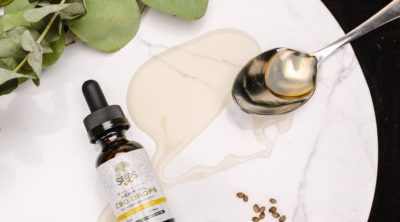
Rhubarb roots are said to have various therapeutic properties. However, they can cause certain side effects too. Read on for some information about such side effects.
We all know that most of the herbs that we use today, have a very long history of use. Many of them have been used throughout the centuries for culinary, cosmetic and medicinal purposes. One such herb that has been highly valued for its therapeutic purposes is rhubarb. Though the herb is used for culinary purposes, such use is said to be of recent origin. However, the medicinal properties of rhubarb have been recognized by humans since time immemorial. Use of rhubarb root for medicinal purposes dates back to the period of ancient Chinese people. In fact, they are among the important herbs used in traditional Chinese medicine. Though it is used for treating various conditions, there are some reports about rhubarb root side effects.
Some Rhubarb Root Facts
Rhubarb is a generic name attributed to the group of plants belonging to the genus Rheum in the family Polygonaceae. Rhubarb plants are said to be natives to certain parts of China, Tibet, Russia, Turkey and North-East India. Though there are numerous varieties of domesticated rhubarb, the most commonly found one is Rheum rhaponticum. Another common variety that is grown for medicinal purposes is Chinese rhubarb or Rheum palmatum, which is said to have much stronger properties, as compared to the garden varieties.
The plant has large leaves that are arranged in a rosette. As the leaves of rhubarb are poisonous, it is the long, fleshy and crimson-colored stalks (petioles) of these leaves that are used for culinary purposes. The crimson color of the petioles in certain rhubarb varieties is due to the presence of anthocyanins. These plants develop from the fleshy rhizomes. As far as the culinary uses of rhubarb are concerned, the plant is generally considered a vegetable. However, an U.S. court ruling of 1947 described it as a fruit, as it is mainly used as a pie filling, as in case of fruits. For medicinal purposes, these rhizomes or rhubarb roots are used. Even the underground stems are sometimes used for therapeutic purposes.
Rhubarb Root Benefits
As mentioned above, the roots of rhubarb plant have been used throughout the centuries, for medicinal purposes. Most of the hybrid rhubarb plants that have been developed recently and used as garden rhubarbs lack medicinal properties. It is the Chinese rhubarb that is popular for this purpose. The roots of this plant contain various components like anthraquinones, stilbenes, tannins, phenolics and sennosides. While the action of tannins help to relieve diarrhea, anthraquinones provide relief from constipation. Though these components have contradictory functions, lower doses of rhubarb root are used for treating diarrhea, whereas higher doses are helpful for relief from constipation. It is said that these roots have been used as a laxative, for the last 5000 years.
Besides that, this herb is also said to be beneficial in treating gastrointestinal hemorrhage, indigestion, hemorrhoids and jaundice. It is also used by some people as a weight loss aid. Chinese herbalists use it for treating burns, wounds, sores, ulcers and conjunctivitis. According to them, rhubarb root is also helpful in treating infections of the lungs. Even Candida albicans is said to be controlled by using this herb. It has been suggested that rhubarb root may prove beneficial in treating certain types of cancer, renal failure, cholera and endometriosis. This root is now available in the form of dried roots, liquid extract and capsules.
Side Effects of Rhubarb Root0
Rhubarb used as food is found to be safe for almost all humans. But, this may not be same for those who use this herb for medicinal purposes. In most cases, rhubarb root side effects are associated with large dosages, especially those with longer durations. While some of these side effects like discolored urine are harmless, some others are mild.
The following are some of the common side effects of this herb.
- Abdominal pain and cramping
- Uterine contractions
- Nausea and vomiting
- Burning sensation in the mouth and throat
- Dehydration
- Loss of electrolytes (especially potassium)
Long term use of this herb is said to cause vertigo, cirrhosis of liver, cardiac arrhythmias and laxative dependency. In case of such side effects, discontinue the use of this herb and contact your doctor.
Rhubarb root is not recommended for pregnant and nursing women, kids under the age of 12 years and those with kidney stones and gallstones. Those with certain gastrointestinal problems like Crohn’s disease, colitis and intestinal obstruction, must avoid using this herb. So, it is always advisable to use rhubarb root as per the instructions of a qualified herbalist. You must inform him/her about your current medications and medical condition. It will be better to seek the opinion of your physician, before starting any herbal treatment.
Disclaimer: This article is for informational purposes only and should not be used as a replacement for expert medical advice. Visiting your doctor is the best and safest way to diagnose and treat any health condition.


